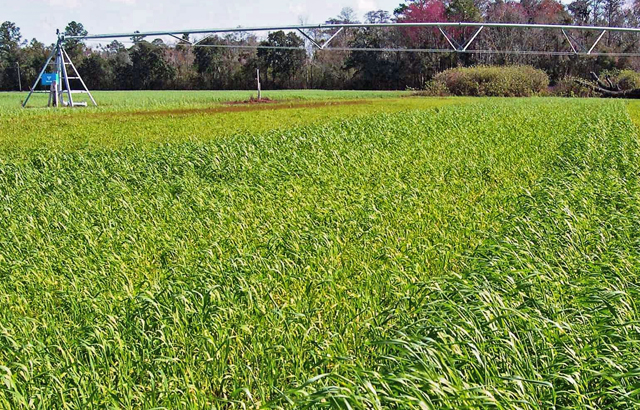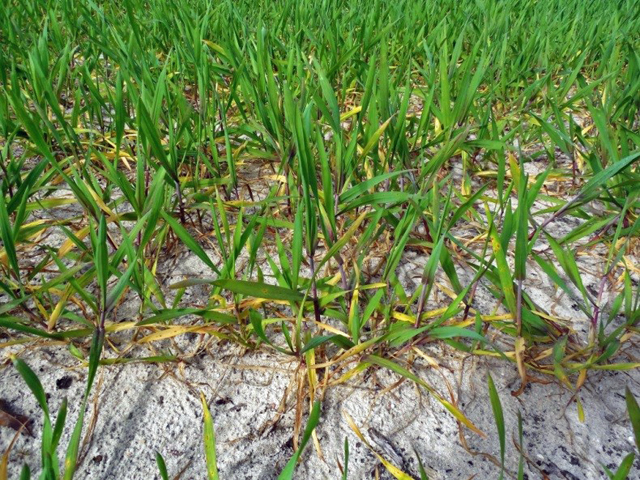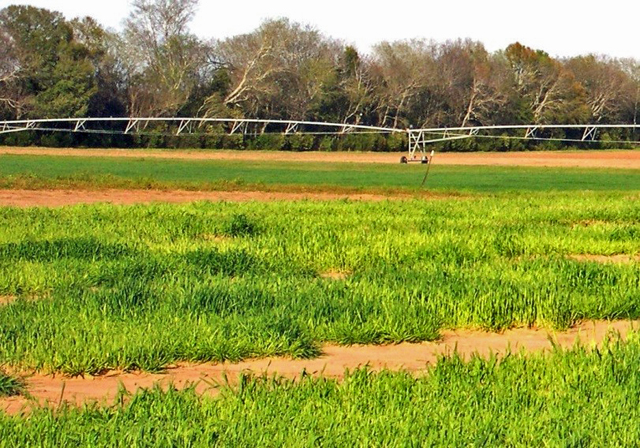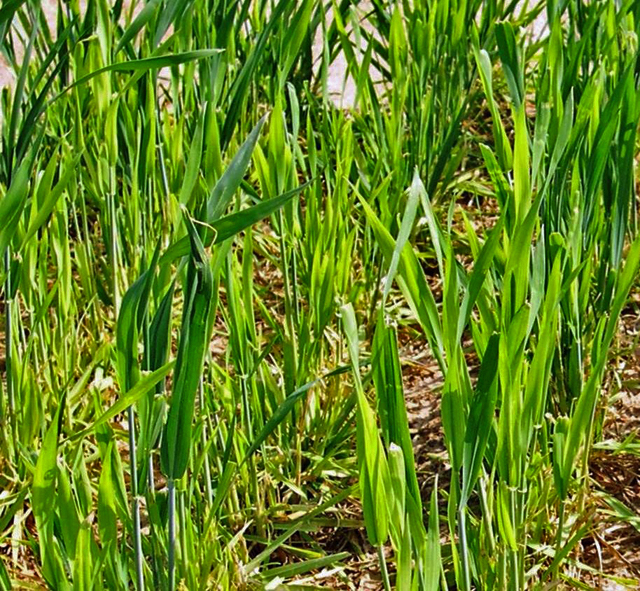Cheryl Mackowiak, UF/IFAS NFREC Soils Specialist
As producers near the end of cover crop and cool-season forage planting in the Southeastern U.S., it is time to focus on fertilization. Depending upon your state, extension professionals have establish guidelines for how much and when to apply nitrogen (N), phosphorus (P), and potassium (K) fertilizers to meet crop demands. For example, annual ryegrass and small grains (i.e., wheat, oat, rye, triticale) planted on tilled land often benefit from split N rates such as 30 lbs N/acre at or near planting and another 40 to 50 lbs N/acre after establishment. Overseeded pastures may get by with an initial 30 lbs N/acre, but often 50 lbs N/acre is applied once the cool-season grass has emerged with another 50 lbs N/ac applied after repeated grazing to help support regrowth in spring, when winter forage is the most productive. In comparison, P and K applications are based upon soil sampling and your soil report recommendations. These nutrients are typically applied only once in the fall (if needed), and combined with your first N application.
Frequently, a call comes in that a farmer’s winter grass forage does not seem to be responding to N fertilizer. They have met or exceeded the N fertilizer recommendations and yet, the plants remain faded looking and stunted. The first question I ask: “How much sulfur (S) was applied?” Sulfur deficiency can often be mistaken for N deficiency in both, summer and winter grasses. We typically see more problems in winter grasses, because of where the grasses are planted and the previous season land-use. If none of your N fertilizer was applied as ammonium sulfate, or your K fertilizer did not contain potassium sulfate, SolPoMag, or a similar sulfate fertilizer, your grass may be suffering from S deficiency. The good news is that many grass species respond quickly to S fertilization, and an application rate as low as 10 lbs S/acre is often all that is required for recovery. An application of 10 to 20 lbs S/acre will hardly be noticed in your fertilizer bill.


Both, N and S nutrient deficiencies will result in stunted growth, and a yellow color. However, if it is N deficiency, it is more typical that the field canopy will appear uniformly yellow over large areas, or you will observe straight line streaks where the fertilizer truck may have overlapped with the previous pass (Figs. 1 and 2). Upon closer inspection, the lower (older) leaves of N deficient plants will be lighter green or even yellow (Fig. 3).

With Sulfur (S) deficiency, the field will have a splotchy or mottled appearance, and sometimes the affected plants are intermixed with healthy looking plants (Fig. 4). Upon closer inspection, the newer leaves on individual plants may be lighter green than the older, or more basal leaves (Fig. 5).


Conditions that may lead to S deficiencies include, the lack of at least 10 lbs S, in sulfate form, as part of your fertilizer blend (elemental S will not provide a quick enough response), planting on row crop land, or planting on new land that had been forest or pine plantation (often locations for wildlife food plots). Well-managed pastures are less likely to suffer from S deficiencies, since livestock excreta contributes S to the soil. Not all labs analyze for soil S, so the safe bet is to include a small amount (10 to 20 lbs S/acre) of sulfate S in your fertilizer blend. Check the fertilizer label if you purchase bags, or make the request when you hire custom fertilizer spreading. If you have to apply the S fertilizer yourself (small areas), you can purchase SulPoMag, potassium sulfate, calcium sulfate (i.e., gypsum), or magnesium sulfate at many feed and seed stores. Remember, cool-season legumes (clovers, vetch, peas, etc) benefit from 20 lbs S/acre fertilization, as well!
—
For more information related to this subject, use the following UF/IFAS publication links:
Tillage and Overseeding Pastures for Winter Forage Production in North Florida
Fertilizing and Liming Forage Crops
Soil Test Submission Form
Soil Testing for Plant-Available Nutrients—What Is It and Why Do We Use It?
Soil and Plant Tissue Testing
 0
0
